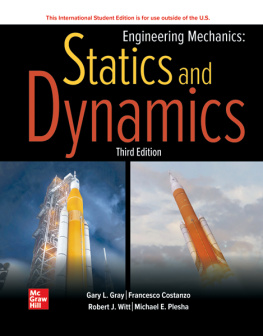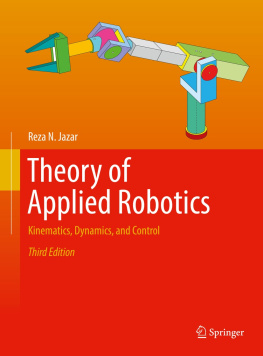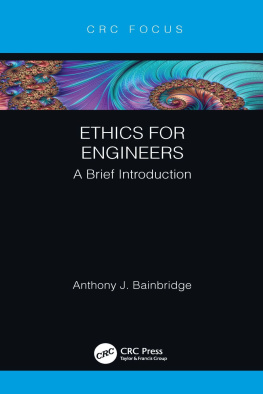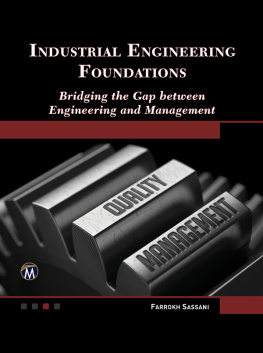
Scrivener Publishing
100 Cummings Center, Suite 541J
Beverly, MA 01915-6106
Publishers at Scrivener
Martin Scrivener ()
Phillip Carmical ()
Structural Dynamics
Yong Bai
Zhao-Dong Xu
This edition first published 2019 by John Wiley & Sons, Inc., 111 River Street, Hoboken, NJ 07030, USA and Scrivener Publishing LLC, 100 Cummings Center, Suite 541J, Beverly, MA 01915, USA
2019 Scrivener Publishing LLC
For more information about Scrivener publications please visit www.scrivenerpublishing.com.
All rights reserved. No part of this publication may be reproduced, stored in a retrieval system, or transmitted, in any form or by any means, electronic, mechanical, photocopying, recording, or otherwise, except as permitted by law. Advice on how to obtain permission to reuse material from this title is available at http://www.wiley.com/go/permissions.
Wiley Global Headquarters
111 River Street, Hoboken, NJ 07030, USA
For details of our global editorial offices, customer services, and more information about Wiley products visit us at www.wiley.com.
Limit of Liability/Disclaimer of Warranty
While the publisher and authors have used their best efforts in preparing this work, they make no representations or warranties with respect to the accuracy or completeness of the contents of this work and specifically disclaim all warranties, including without limitation any implied warranties of merchantability or fitness for a particular purpose. No warranty may be created or extended by sales representatives, written sales materials, or promotional statements for this work. The fact that an organization, website, or product is referred to in this work as a citation and/or potential source of further information does not mean that the publisher and authors endorse the information or services the organization, website, or product may provide or recommendations it may make. This work is sold with the understanding that the publisher is not engaged in rendering professional services. The advice and strategies contained herein may not be suitable for your situation. You should consult with a specialist where appropriate. Neither the publisher nor authors shall be liable for any loss of profit or any other commercial damages, including but not limited to special, incidental, consequential, or other damages. Further, readers should be aware that websites listed in this work may have changed or disappeared between when this work was written and when it is read.
Library of Congress Cataloging-in-Publication Data
ISBN 978-1-119-60560-7
Preface
Dynamic problems of structures are ubiquitous in research. Therefore, it is very important for students majoring in civil engineering, mechanical engineering, aircraft engineering and ocean engineering to systematically grasp the basic concepts, calculation principles and calculation methods of structural dynamics. This book focuses on the basic theories and concepts, as well as the application and background of theories and concepts in engineering. Since the basic principles and methods of dynamics are applied to other various engineering fields, this book can also be used as a reference for undergraduate and graduate students in other majors.
The main contents include basic theory of dynamics, establishment of equation of motion, single degree of freedom systems, multi-degree of freedom systems, distributed-parameter systems, stochastic structural vibrations, research projects of structural dynamics, and structural dynamics of marine pipeline and riser.
This book was co-authored by Professor Yong Bai of Southern University of Science and Technology and Professor Zhao-Dong Xu of Southeast University. The authors would like to appreciate Dr. Yong Bais and Dr. Zhao-Dong Xus graduate students and postdoctoral fellows who provided the initial technical writing. The students in Southern University of Science and Technology are Ms. Xinyu Sun (), and Ms. Tian Zhang (proofread all). Thanks to all persons involved in reviewing the book.
About the Authors
Professor Bai received a doctorate from Hiroshima University in Japan and engaged in postdoctoral work in the field of ocean engineering in Technical University of Denmark, Norwegian University of Science and Technology and University of California at Berkeley. He has published over 100 research papers, 9 English academic treatises and 8 Chinese books on Ocean Engineering. Bai served as a professor at University of Stavanger, Harbin Engineering University, Zhejiang University and Southern University of Science and Technology. He guided more than 50 graduate students and 30 doctoral students.
Professor Bai has a wealth of engineering experience and management skills. He worked in Det Norske Veritas, American Bureau of Shipping, JP KENNY Company in Norway, Shell E & P Company and MCS in the United States. He has presided over dozens of large projects in the field of ship structures, submarine pipelines and risers, design analysis and risk assessment of offshore platforms. Bai put forward the design concept of buckling and ultimate load carrying capacity of deepwater submarine pipelines. He improved the design methods, analytical tools and design standards of marine pipelines and reached the international leading level. He significantly improved the design methodology and criteria for subsea pipelines and risers such as ultimate strength design, use of risk and reliability methods.
He contributed to subsea technology by publishing many papers and a recognized book entitled Subsea Engineering Handbook and promoted limit-state design and use of risk and reliability by teaching at universities and publishing a book entitled Marine Structural Design.
Professor Zhao-Dong Xu is the professor at the Civil Engineering School of Southeast University, serving as doctoral tutor. His major research fields are Anti-earthquake of Structures, Structural Control and Health Monitoring, Smart Material and Structures. Professor Xu got his Ph.D. in China, followed by a series of teaching and research positions at Xian Jiaotong University, Ibaraki University, North Carolina State University and University of Illinois at Urbana-Champaign. He is the Vice President of RC & PC Key Laboratory of Education Ministry. He has also been Changjiang Scholar Distinguished Professor and the National Science Fund for Distinguished Young Scholars in China.
Professor Xu engaged in teaching and research on structural dynamics for more than 20 years. He has published more than 200 papers on the subject of structure dynamics research, numerical analysis and application of civil engineering, etc. He has been honored with many awardsthe 43rd Geneva International Patents Exhibition Gold Award, the Second Award of National Award for Technological Invention in China, the Top Award of Chinese Building Materials Technology Invention, etc. He has completed many significant research projects in the areas of structural vibration control and structural health monitoring, and many research outcomes have been utilized in major real applications.
Chapter 1
Introduction
1.1 Overview of Structural Dynamics
Have you ever thought about the technology used in the Shenzhou spacecraft that we are all so proud of? Have you ever thought about what kind of marvelous power it takes to make planes which weigh tons fly while we enjoy them? Whats the reason for the collapse of Tacoma Narrows Bridge when it suffered 19m/s wind? Why are buildings with seismic resistance and isolation technology considered better in terms of seismic safety? All those subjects exist in nature, and are aspects of the subject of advanced dynamics as well.
Next page









